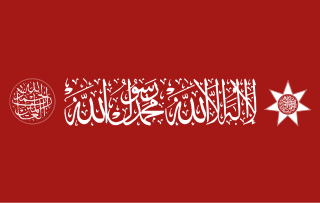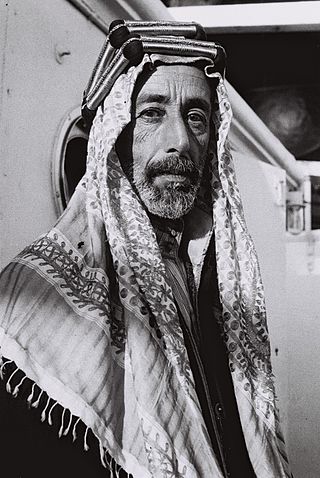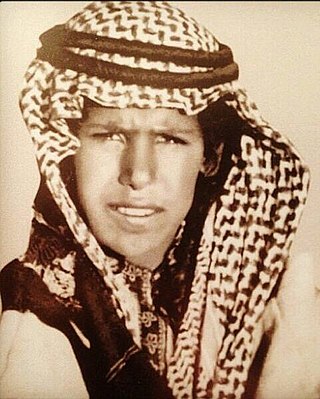
A son is a male offspring; a boy or a man in relation to his parents. The female counterpart is a daughter. From a biological perspective, a son constitutes a first degree relative.

A son is a male offspring; a boy or a man in relation to his parents. The female counterpart is a daughter. From a biological perspective, a son constitutes a first degree relative.
In pre-industrial societies and some current countries with agriculture-based economies, a higher value was, and still is, assigned to sons rather than daughters, giving males higher social status, because males were physically stronger, and could perform farming tasks more effectively.
In China, a one-child policy was in effect until 2015 in order to address rapid population growth. Official birth records showed a rise in the level of male births since the policy was brought into law. This was attributed to a number of factors, including the illegal practice of sex-selective abortion and widespread under-reporting of female births.[ citation needed ]
In patrilineal societies, sons will customarily inherit an estate before daughters. [1]
In some cultures, the eldest son has special privileges. For example, in Biblical times, the first-born male was bequeathed the most goods from his father. Some Japanese social norms involving the eldest son are: "that parents are more likely to live with their eldest child if their eldest child is a son" and "that parents are most likely to live with their eldest son even if he is not the eldest child". [2]

Among Christians, "the Son" or Son of God refers to Jesus Christ. Trinitarian Christians view Jesus as the human incarnation of God the second person of the Trinity, known as God the Son. In the Gospels, Jesus sometimes refers to himself as the Son of Man.
In many cultures, the surname of the family means "son of", indicating a possible ancestry—i.e., that the whole family descends from a common ancestor. It may vary between the beginning or the termination of the surname.
The Arabic word for son is ibn. Because family and ancestry are important cultural values in the Arab world and Islam, Arabs and most Muslims (e.g. Bruneian) often use bin, which is a form of ibn, in their full names. The bin here means "son of." For example, the Arab name "Saleh bin Tarif bin Khaled Al-Fulani" translates as "Saleh, son of Tarif, son of Khaled; of the family Al-Fulani" (cf. Arab family naming conventions). Accordingly, the opposite of ibn/bin is abu, meaning "the father of." It is a retronym, given upon the birth of one's first-born son, and is used as a moniker to indicate the newly acquired fatherhood status, rather than a family name. For example, if Mahmoud's first-born son is named Abdullah, from that point on Mahmoud can be called "Abu Abdullah."
This is cognate with the Hebrew language ben, as in "Judah ben Abram HaLevi," which means "Judah, son of Abram, the Levite." Ben is also a standalone name.
A patronymic, or patronym, is a component of a personal name based on the given name of one's father, grandfather (avonymic), or an earlier male ancestor. It is the male equivalent of a matronymic.
Arabic language names have historically been based on a long naming system. Many people from the Arabic-speaking and also non-Arab Muslim countries have not had given/middle/family names but rather a chain of names. This system remains in use throughout the Arabic and Muslim worlds.

The Hashemites, also House of Hashim, are the royal family of Jordan, which they have ruled since 1921, and were the royal family of the kingdoms of Hejaz (1916–1925), Syria (1920), and Iraq (1921–1958). The family had ruled the city of Mecca continuously from the 10th century, frequently as vassals of outside powers, and ruled the thrones of the Hejaz, Syria, Iraq, and Jordan following their World War I alliance with the British Empire.

Ibn Khaldun was an Arab sociologist, philosopher, and historian widely acknowledged to be one of the greatest social scientists of the Middle Ages, and considered by many to be the father of historiography, sociology, economics, and demography studies.
The Jewish name has historically varied, encompassing throughout the centuries several different traditions. This article looks at the onomastics practices of the Jewish people, that is, the history of the origin and forms of proper names.

Al-Kahina, also known as Dihya, was a Berber queen of the Aurès and a religious and military leader who led indigenous resistance to the Muslim conquest of the Maghreb, the region then known as Numidia, notably defeating the Umayyad forces in the Battle of Meskiana after which she became the uncontested ruler of the whole Maghreb, before being decisively defeated at the Battle of Tabarka. She was born in the early 7th century AD and died around the end of the 7th century in modern-day Algeria. She is considered one of the most famous figures in the history of the Berber resistance to the Arab conquest in the 7th century.
Muhammadu Bello was the second Sultan of Sokoto and reigned from 1817 until 1837. He was also an active writer of history, poetry, and Islamic studies. He was the son and primary aide to Usman dan Fodio, the founder of the Sokoto Caliphate and the first Sultan. During his reign, he encouraged the spread of Islam throughout the region, increasing education for both men and women, and the establishment of Islamic courts. He died on October 25, 1837, and was succeeded by his brother Abu Bakr Atiku and then his son, Aliyu Babba.

Ali bin Hussein, was King of Hejaz and Grand Sharif of Mecca from October 1924 until he was deposed by Ibn Saud in December 1925. He was the eldest son of King Hussein bin Ali and a scion of the Hashemite family. With the passing of the kingship from his father he also became the heir to the title of caliph, but he did not adopt the office and the style of caliph.

Mansa Sulayman was mansa of the Mali Empire during the middle of the 14th century. He was the brother of Mansa Musa and succeeded Musa's son Magha as mansa.
Mansa Jata, commonly referred to as Mari Jata II, possibly incorrectly, was mansa of Mali from 1360 to 1374. He was an ineffective ruler, and his reign, recorded by the contemporary North African historian Ibn Khaldun, marked the beginning of the decline of the Mali Empire.
As-Samaw’al bin ‘Ādiyā’ was an Arabian poet and warrior, esteemed by the Arabs for his loyalty, which was commemorated by an Arabic idiom: "awfá min as-Samaw’al".

Asad ibn Hāshim was the son of Hashim ibn Abd Manaf and the brother of Abd al-Muttalib. He was the father of Fatima bint Asad, the mother of Ali and the cousin and wife of Abu Talib. Asad was a very respectful person among the Qureshi Arab tribe. He was a merchant and very often helped the poor. His name means Lion. His descendants usually use the surname Al-Quraishi,Al-Hashimi, Al-Asadi, Sayyid, Sharif ,while some of his descendants avoid using any surname.
A kunya is a teknonym in an Arabic name, the name of an adult derived from their eldest child. Sometimes, however, it is derived from the eldest male if the eldest child is female.
Abul Amlak Moulay Sharif ibn 'Ali was an Arab Emir of Tafilalt from 1631 to 1636. He was a sharif whose family claimed to be descended from the Islamic prophet Muhammad through his grandson Hasan. Moulay Sharif is considered to be the founder of the Alaouite Dynasty of Morocco for being the father of Sidi Muhammad, Al-Rashid of Morocco, and Ismail Ibn Sharif.
Moroccan literature is the literature produced by people who lived in or were culturally connected to Morocco and the historical states that have existed partially or entirely within the geographical area that is now Morocco. Apart from the various forms of oral literature, the written literature of Morocco encompasses various genres, including poetry, prose, theater, and nonfiction like religious literature. Moroccan literature was and is mainly written in Arabic, however it was also written at a lesser extent in Berber languages, Hebrew, French, and Spanish. Through translations into English and other languages, Moroccan literature originally written in Arabic or one of the other native languages has become accessible to readers worldwide.
Banu (بنو) is Arabic for "the children of" or "descendants of" and appears before the name of a tribal progenitor. The English counterpart would be "House of", for example the House of Saud. Another example of the usage is the Bani Quraish, the tribe from which Muhammad came, for which a Quranic Surah is also named.
Yahia, is a common Arabic male given name also written as Yahya or Yehia. People with the name include:

Turki I bin Abdulaziz Al Saud was the eldest son of the Emir of Nejd and his second wife, Wadha bint Muhammad Al Orair. He was his father's heir apparent from 1902 to 1919. Turki accompanied his father during the conquest of the Arabian Peninsula at a young age and witnessed battles in Kuwait and Al Hasa. He died in the 1918–19 flu pandemic, which also killed many others in the region. His younger brother Saud replaced him as heir apparent.

Abdulaziz bin Abdul Rahman Al Saud (1875–1953), the founder and first king of Saudi Arabia, also called Ibn Saud, was very young when he first got married. However, his wife died shortly after their marriage. Ibn Saud remarried at eighteen and his firstborn child was Prince Turki I. He had 45 sons of whom 36 survived to adulthood and had children of their own. He also had many daughters. He is thought to have had 22 wives.